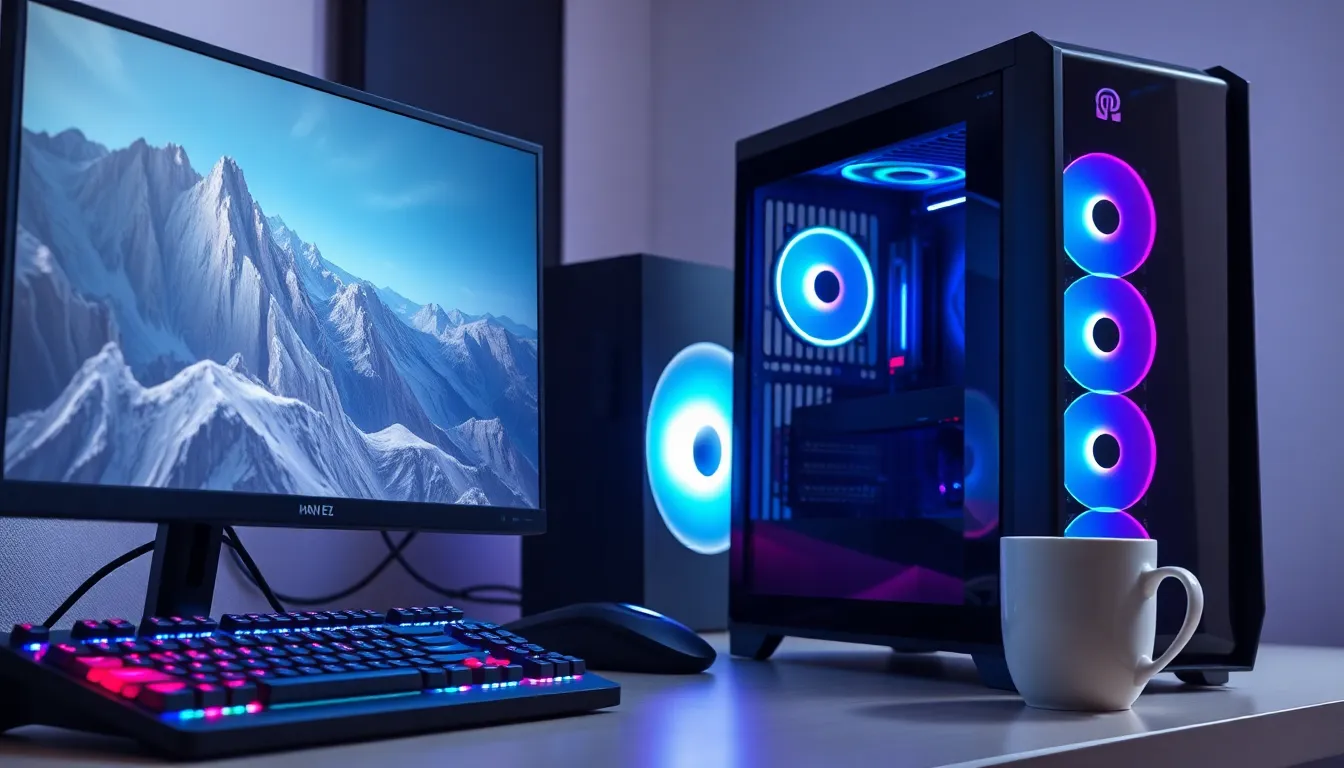Ever found yourself staring at a frozen screen while trying to enjoy your favorite game or stream the latest episode? If you’ve experienced the dreaded lag from Windows’ “widdeadvi,” you’re not alone. This pesky little gremlin can turn your smooth computing experience into a frustrating slideshow faster than you can say “update your drivers.”
Why Widdeadvi Lags in My PC
Widdeadvi, a Windows process, often causes noticeable lag in computing performance. This component primarily manages applications related to Windows graphics and display settings. Understanding its function helps identify the reasons for performance issues.
Users commonly experience latency during gaming or streaming due to widdeadvi’s high resource consumption. CPU and GPU workloads significantly increase when it malfunctions or encounters conflicts with other applications. The impact on responsiveness becomes evident, leading to frustration and reduced enjoyment.
Troubleshooting widdeadvi can involve several steps. One effective method includes checking for outdated drivers. Keeping graphics drivers up-to-date ensures peak performance and minimizes conflicts. In addition, adjusting visual settings within applications can alleviate some pressure on system resources.
Monitoring system performance can provide insights into widdeadvi’s behavior. Utilizing task manager reveals CPU and memory usage trends related to this process. If spikes in these areas occur, users might need to explore settings modifications or driver updates.
Another solution entails examining background applications. Programs running concurrently with widdeadvi can compete for resources. Disabling non-essential applications may free up critical system memory, enhancing overall performance.
Some users consider reinstalling or repairing Windows to resolve persistent issues tied to widdeadvi. This action can address software corruption that disrupts normal operations. However, ensuring backups are in place is essential prior to proceeding with such measures.
Overall, recognizing the role of widdeadvi in Windows performance is fundamental. Through careful management, users can improve their experience and reduce lag significantly. Understanding the causes and potential solutions empowers users to take control of their computing environment.
Common Causes of Lag

Lag in the context of widdeadvi often stems from various causes. Understanding these can help users identify and address the issues effectively.
Software Issues
Outdated drivers frequently lead to performance delays. Performance issues occur when software conflicts arise due to incompatible applications. Background applications sometimes consume resources, leaving less available for gaming or streaming. Executive privileges may prevent some software updates, making compatibility a problem. Malware infections can also slow down processes, including widdeadvi. Keeping the operating system current helps maintain optimal performance. Checking for software updates regularly aids in mitigating conflicts.
Hardware Limitations
Insufficient RAM can hinder a system’s ability to run multiple applications smoothly. Many users may notice significant lag if their CPU lacks processing power. High-resolution graphics settings might exceed a graphics card’s capabilities, causing slowdowns. Running on older hard drives often leads to latency, especially compared to solid-state drives (SSDs). Thermal throttling, which occurs when hardware overheats, may reduce performance. Upgrading components like RAM or graphics cards often enhances performance significantly, especially for demanding applications.
Troubleshooting Steps
Troubleshooting the lag associated with widdeadvi involves several focused actions to restore optimal performance. Following these steps can lead to improvements.
Checking System Requirements
Verify that the system meets all software requirements. Minimum RAM specifications often influence performance; aim for at least 8 GB for demanding applications. The CPU should also be capable, ideally a dual-core processor or higher. Ensure that the graphics card can handle high-resolution settings. Check compatibility with each application to avoid performance issues. Running a system check or a performance benchmark tool provides additional insights into hardware capability.
Updating Drivers
Updating drivers serves as a critical step in troubleshooting lag issues. Navigate to the device manager and look for outdated drivers, especially for graphics cards. Download the latest updates directly from manufacturer websites, as this often fixes bugs and improves efficiency. Schedule regular checks for driver updates to maintain peak performance. Use driver update software for automated solutions, streamlining the process. Regular updates ensure compatibility with new software, reducing lag caused by outdated drivers.
Performance Optimization Tips
Monitor system resources regularly. Using Task Manager helps identify what applications consume significant CPU or memory. Checking the performance tab displays resource usage; closing unnecessary applications eases lag.
Update graphics drivers consistently. Download the latest drivers directly from manufacturer websites. Installing these updates enhances compatibility and can mitigate performance issues associated with widdeadvi.
Adjust visual settings in games and applications. Lowering the resolution or disabling high-end graphics options reduces strain on the GPU. Balancing settings improves overall performance while minimizing lag.
Examine background applications closely. Some software runs automatically, chewing up memory and processing power. Disabling unneeded startup programs provides more resources for essential tasks.
Increase system memory if possible. Upgrading RAM to at least 16 GB can offer significant improvements in performance. This change benefits multitasking and running demanding applications or games.
Consider hardware enhancements as well. Upgrading the CPU or graphics card provides additional power for resource-intensive tasks. Such upgrades often resolve persistent lag issues, enhancing overall user experience.
Run regular malware scans using reputable software. Malware can drastically impact system performance by using resources maliciously. Ensuring a clean system helps maintain stable operation and prevent lag related to widdeadvi.
Keep the operating system updated. Regular Windows updates often include performance patches and security enhancements. Allowing these updates to install creates a more stable and efficient computing environment.
Conclusion
Addressing lag caused by widdeadvi is crucial for anyone seeking a smooth gaming or streaming experience. Users can significantly improve performance by updating drivers and optimizing system settings. Regularly monitoring system resources helps identify any applications that may be hogging valuable resources.
Upgrading hardware components like RAM or the graphics card can also provide a noticeable boost in performance. By keeping the operating system and drivers updated and being proactive about maintenance, users can tackle the frustrations associated with lag. Ultimately, understanding and addressing the factors contributing to widdeadvi lag can lead to a more enjoyable computing experience.
